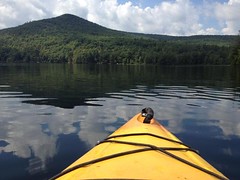 On Wednesday of this week I’ll be speaking about DNSSEC at the 5th international conference for ccTLD registries and registrars of CIS, Central and Eastern Europe in Budva, Montenegro. I’m very much looking forward to this event as it is entirely focused around the concerns of registries and registrars – and they are one of the key groups who can accelerate the deployment of DNSSEC. In fact, you can see DNSSEC come up a few times on the agenda – and I’m looking forward to hearing the case study of the .UA deployment of DNSSEC.
On Wednesday of this week I’ll be speaking about DNSSEC at the 5th international conference for ccTLD registries and registrars of CIS, Central and Eastern Europe in Budva, Montenegro. I’m very much looking forward to this event as it is entirely focused around the concerns of registries and registrars – and they are one of the key groups who can accelerate the deployment of DNSSEC. In fact, you can see DNSSEC come up a few times on the agenda – and I’m looking forward to hearing the case study of the .UA deployment of DNSSEC.
My session on Wednesday is titled “Key Steps in Accelerating DNSSEC Deployment” and for the registries and registrars the steps really can be ultimately reduced down to these:
- Registries need to make it as simple as possible for registrars to upload DS (Delegation Signor) records into the registries’ zones.
- Registrars need to make it as simple as possible for DNS hosting providers to upload DS records into the registrars databases.
Those two steps right there would greatly accelerate the deployment of DNSSEC in those ccTLDs.
That’s not all I’ll talk about, of course. I’m also going to be discussing the growth of the .NL signed domains as that example may be something some of the ccTLDs can replicate. I’ll be talking about how the ongoing work with DANE securing SSL/TLS certificates via DNSSEC should spur enterprise interest in deployment. I’ll be providing some examples of a good user experience … and much more. I’ll be making the slides available later and potentially an audio or video recording if I am able to do so.
The main point of my attendance, too, is to interact with registries and registrars and find out what we can do to make it easier for them to deploy DNSSEC. That feedback will certainly help our DNSSEC content roadmap and help us prioritize what materials we are creating first.
If you attending the event I look forward to meeting up with you, and I look forward to learning from those there about DNSSEC – and all the other issues – in the Central and Eastern European region.











